The global shutter on the Sony a9 III is a monumental development in mirrorless sensor technology. While much has been said about the pros and cons of a global shutter versus a rolling shutter, little has been said about the real-world practicalities of living with and constantly shooting with this camera. As I always try to do, I’m here to change that by providing helpful information and test results as someone who bought a Sony a9 III and used it extensively. I also spent $1000+ on the wrong memory card, and I want to help you avoid making the same mistake!
This article will discuss the best memory cards for the Sony a9 III. This might seem dull, but you’ll have to trust me from the get-go. The sheer speed of the Sony a9 III has some knock-on consequences for memory card choice that we haven’t seen in any other camera. This camera’s 120fps RAW burst speed generates so much data per second that we must recalibrate our concept of what features and specifications are essential to us from a memory card choice perspective. The results of my testing were a massive surprise to me, but from a memory card cost perspective, turn out to be very positive.
Table of Contents
a9 II Memory Card Choice – What Is Important Now?
The Internal Process
Before we delve into this topic, we should quickly discuss how cameras store the images that have just been captured. When you press the shutter button, the image is not immediately written to the memory card. Instead, it is stored in the camera’s internal memory, the buffer, and then moved to the memory card.
This transfer from the buffer to the memory card usually begins as soon as the image file is stored in the buffer. If you shoot a high-speed burst, the camera will move images from the buffer to the memory card while simultaneously creating new photos and storing them in the buffer. If the buffer clearing speed were equal to the data rate of newly created images, you could shoot continuously until the memory card was full. In some modern cameras, this is possible when shooting JPEGS.
What is more common for RAW shooters is that the camera generates data faster than it can be written to the memory card. Eventually, the camera needs to take a breather, so it slows the burst speed to allow the buffer to clear. It’s important to remember that some images can be transferred from the buffer to the memory card during a prolonged burst of several seconds. Keep this in mind.
The Before a9 III Times
When testing memory cards for cameras, the previous process in the period I will call “Before a9 III” involved shooting bursts with a camera set to its highest continuous shooting speed, then recording how many photos were captured before the camera’s buffer was filled, and how long it took to clear that buffer. A heavy emphasis was placed on results from the first metric when choosing the best memory card for any specific camera. After all, in a moment of action, who wouldn’t want to capture more photos in a burst before the camera stuttered from a full buffer?
The second metric we looked at in the before a9 III times was buffer clearing speed, which is the speed at which a full buffer of images was moved to the memory card, alleviating the stuttered shooting and getting back to a camera’s maximum burst speed. This second metric was usually given a second priority, largely because the maximum number of images cameras could shoot before filling the buffer and reaching that reduced shooting speed had grown so large that few people ran into the buffer in the first place during day-to-day shooting.
If you never reach a full buffer, the buffer clearing speed hardly matters as your camera isn’t slowing down. The buffer clears in the background during your bursts and between presses of the shutter button. Taking the Sony a1 as another high-speed camera example and another camera I own and have shot with for years, I can get around 153-157 compressed RAW files before the buffer fills in High+ 30fps burst mode.
This burst depth lasts just over five seconds, enough for almost any action situation I can imagine. After years of shooting the Sony a1, whether shooting compressed RAW at 30fps or lossless compressed raw at 20fps, I can honestly say that the buffer is not something I worry about. I barely, if ever, bump into it, even when shooting sports and high-action wildlife like birds in flight (BIF).
The New Reality – Sony a9 III Buffer Behaviour
In contrast to all other cameras I have used in recent years, I’ll tell you right now that if you buy the Sony a9 III, the buffer is something you will become intimately familiar with. Given the slight noise performance loss and dynamic range disadvantages of a global shutter, there aren’t many reasons to buy a Sony a9 III if you aren’t going to take advantage of the shooting speed that this technology enables. Put simply, if you don’t plan to shoot with this camera in 60fps or 120fps mode or use the unique RAW pre-capture features, you should probably buy the Sony a1 instead.
When I got my a9 III, I was surprised to find that it didn’t matter what type or speed of memory card I put in it; the buffer always ran out at around the same point—about 100-105 photos in compressed RAW mode. You can put anything in there, from a cheap V60 SD card to a high-end VPG 400 CFexpress card, and in high-speed 120fps mode, you’ll always get about the same number of images before the buffer fills.
When I sat and thought about this, it made more sense. Shooting at 120fps, 105 images are captured in less than one second, and the camera barely has a moment to move anything from the buffer to the card. The burst depth comes almost entirely from the size and speed of the camera’s internal memory. While the maximum number of photos you can capture in a burst varies very little from card to card in the a9 III, there are huge differences in how fast the buffer clears.
It’s also important to know that the slowdown when the buffer is full is significant. Even in a best-case scenario, it drops the camera to somewhere in the 5-6fps range, though this speed is heavily dictated by the memory card’s sustained write speed, with SD cards keeping the number especially low. Also important to understand is that the slowed speed is not in some way inversely proportional to the remaining space in the buffer. In other words, when the buffer is cleared halfway, having been full, the camera doesn’t speed up if you keep your finger on the shutter. If you fill the buffer, the best thing to do is lift off the shutter briefly and then press it again.
Sustained Write Speed Is Key
In the past, I would confidently have told you that buying the fastest–and for the fastest, read, highest maximum write speed–memory cards was the best option when shooting with a high-speed camera like the Sony a1. With the a9 III, though, this gets a little more complex. Or, at least, different from what we are used to. The new reality for a9 III owners is that sustained write speed should be the primary concern, not maximum write speed, which is the metric usually plastered on the front of memory cards. A high sustained write speed is what will clear the a9 III’s buffer faster and get you back to full-speed shooting in the shortest possible time.
Again, this is something I’m not used to considering. In the past few years, shooting mainly with the Sony Alpha 1, I just didn’t need to consider buffer clearing time. Even in frantic action situations, such as a cliffside bird colony with birds flying in and out reasonably constantly, the a1 was always ready to go at full speed. With the a9 III only able to capture less than a second of action while shooting at 120fps, you often find yourself waiting for the buffer to clear and hoping a peak action moment doesn’t occur while you wait. The trade-off is the incredible speed, which makes it almost impossible to miss the perfect moment.
Choosing the best memory card for the a9 III is paramount. If you choose the wrong card type or specification, you may be waiting 25 seconds for the buffer to clear. If you choose the right card, you can reduce that to around five seconds, but the right card is probably not the one you think it is. Some memory cards are designed to offer the fastest maximum burst speeds, while others are better at delivering high sustained write speeds. I’ll tell you right now that rushing out and buying the fastest, most expensive Sony TOUGH G-Series CFexpress Type A card is the wrong choice and a complete waste of money in an a9 III.
Card Capacity Is a Factor
Another primary consideration for the Sony a9 III memory card choice is the card capacity. This camera generates data at a frightening rate, and I found it easy to shoot 1TB of images in a day at wildlife action hotspots. Nobody wants to be caught short in the field without room left on their cards, so you’ll need to keep available capacities in mind when studying memory card options. The perfect memory card for the Sony a9 III combines high capacity with a high sustained write speed–not a high maximum write speed.
The perfect memory card for the Sony a9 III combines high capacity with a high sustained write speed–not a high maximum write speed.
Memory card lineups from most brands are typically divided into lower maximum read and write speeds but with higher capacities available and higher maximum speeds with lower capacities available. The slower cards are also much cheaper per gigabyte.
Sony’s M-Series cards are slower but available in higher capacities, while their G-Series cards are faster but in lower capacities. ProGrade Digital has its Cobalt series of faster, lower-capacity cards and its Gold series of slower, higher-capacity cards. Lexar has Gold and Diamond cards, Delkin has Power and Black series, etc.
I Made a Mistake
When I got my a9 III, I was about to head to California to photograph some wildlife. Terrified of running out of card space and unsure about the camera’s buffer performance, I ordered the largest CFexpress Type A card I could find, the Sony TOUGH M 1920GB. It cost over $1000 (big gulp!), making it the most expensive camera accessory I have ever bought that isn’t a lens. It was the wrong choice.
Having not yet shot with the camera and with very little real user experience online about it, I thought I had to choose between a fast card and a card with a high capacity. I chose capacity because, at the time, I didn’t understand the importance of buffer clearing speed on the a9 III and sustained write speed on the memory card.
When the 1920GB M-Series Sony TOUGH card arrived, I made some quick comparisons with a smaller-capacity 160GB G-Series TOUGH card I already owned. The TOUGH G 160GB CFexpress card cleared the buffer in just over five seconds, while my new high-capacity TOUGH M 1920GB card took around ten seconds. At the time, I was somewhat satisfied with this result because I knew 160GB cards wouldn’t cut it for a day’s shooting, and I couldn’t afford to spend $4000+ buying 2TB worth of those faster TOUGH G cards.
ProGrade Digital Gold Type A – Unexpected Performance Metric
Here’s where I made a big mistake. When I bought the Sony TOUGH M card, I didn’t know that ProGrade Digital’s lower-tier Gold Series CFexpress Type A cards have a vital specification that differs wildly from Sony’s lower-tier M-Series CFexpress cards. Maximum read and write speeds are similar among the various brands’ top- and lower-tier cards, but sustained write speeds differ greatly, unbeknownst to me.
Despite being the lower end, cheaper-per-GB cards, ProGrade Digital’s Gold Series of CFexpress Type A cards claimed to have a sustained write speed of 600 MB/s. While this is less than the maximum burst read and write speeds of their more expensive Cobalt card class or Sony’s TOUGH G cards, it is incredibly high for a sustained speed specification. And, as we have discussed, it is sustained write performance that is important for the Sony a9 III. Moreover, ProGrade Digital’s Gold series cards offer that sought-after high capacity–up to 960GB–which is also essential for a9 III users, as well as offering a dollar-per-GB ratio significantly below that of ProGrade’s Cobalt cards or Sony’s TOUGH G cards.
The Best of Both Worlds?
I wanted to know if this was the Goldilocks memory card for the Sony a9 III, so I emailed ProGrade Digital. They offered to send me one of their 480GB God CFexpress Type A cards for testing. I knew I could opt for high capacity and sacrifice buffer clearing speed with the Sony TOUGH M CFexpress card. What I really wanted to see was whether the ProGrade Gold Series CFexpress card cleared the buffer much more quickly than the Sony TOUGH M cards and, ideally, in a time that was close to the more expensive ProGrade Cobalt cards or Sony TOUGH G cards. Is it best of both worlds? A high capacity card that doesn’t sacrifice buffer clearing time?
Eye Opening Test Results
| CFexpress Card | Time to Clear Buffer |
|---|---|
| ProGrade Digital Cobalt VPG400 (review) | 5.10 Seconds |
| Sony TOUGH G VPG400 | 5.27 Seconds |
| ProGrade Digital Gold VPG200 – Winner | 4.95 seconds |
| Sony TOUGH M VPG200 | 10.21 Seconds |
| Delkin BLACK VPG400 (review) | 5.27 seconds |
I tested each card thrice, shooting lossless compressed RAW, and averaged the results. There’s no sense beating around the bush here. The ProGrade Gold Series 480GB CFexpress Type A card delivered exactly what I hoped it would and more. Incredibly, while this card may have slightly lower maximum read and write speeds, it has a higher sustained write speed than ProGrade Cobalt and Sony TOUGH G CFexpress cards.
The result is that it clears the buffer ever so slightly faster than either of those much more expensive VPG400 CFexpress cards while also offering a high capacity and a hugely favorable dollar-per-GB ratio. To my knowledge, no other VPG200 cards currently exhibit the sustained write speed of ProGrade Digital’s Gold cards. Let me underline this again: the ProGrade Digital Gold card cleared the a9 III buffer more than twice as fast as the comparable Sony VPG200 Tough M card. An outrageous result!
Conclusion – A Clear Winner
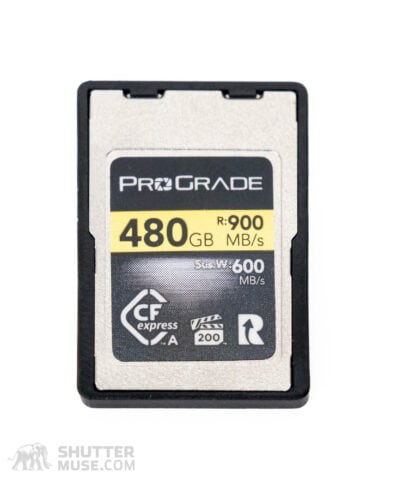
The Sony a9 III generates data at such a high speed that it forces us to reevaluate the important specifications of a memory card. Buffer clearing speed becomes all-important, and for that, a card must have a high sustained write speed, relegating maximum read and write speed to a secondary or even a tertiary concern after available capacity.
The ProGrade Digital Gold Series CFexpress Type A card is the best memory card for the Sony a9 III. Although this card is theoretically a lower-tier VPG200 card, not a more expensive VPG400 card, it offers sustained average write speeds that exceed ProGrade Digital’s more expensive Cobalt VPG400 card and Sony’s TOUGH G cards. Moreover, it offers 120GB, 240GB, 480GB and 960GB capacity cards at prices far below equivalent sizes in higher-tier VPG400 cards. This is a win-win situation for Sony a9 III shooters, and once again, it proves why I keep returning to ProGrade Digital memory cards when seeking the best options for my readers.
The 480GB ProGrade Gold card is $449.99, while even a lower-capacity Sony G 320GB card is $529.99. The Sony M-Series cards have a slight dollar-per-GB advantage, with the smallest 960GB card costing $748. However, as testing has shown, the sustained write speed of this card is twice as slow as the ProGrad Digital Gold card, so it’s still a clear win for the ProGrade Gold cards. For even more speed tests, you can view a full review of the ProGrade Gold CFexpresss Type A card here.
Where to Buy
As always, using our links is appreciated when making your purchases. Canadian readers should choose to buy from B&H Photo. You’ll get free shipping and pay the duties upfront, so there are no surprises.
- ProGrade Digital GOLD CFexpress Type A 120GB – B&H Photo / Amazon / Adorama
- ProGrade Digital GOLD CFexpress Type A 240GB – B&H Photo / Amazon / Adorama
- ProGrade Digital GOLD CFexpress Type A 480GB – B&H Photo / Amazon / Adorama
- ProGrade Digital GOLD CFexpress Type A 960GB – B&H Photo / Amazon / Adorama
Should You Use SD or CFexpress Type A?
This post has concentrated on CFexpress Type A cards for good reason. Buffer clearing time with a CFexpress Type A card can be around five seconds if you choose the right card. On the other hand, this jumps up to 25 seconds with a half-decent SD card. If you are purely shooting photos, there is no way you should use an SD card in the a9 III. It would be a painful experience.
I can only think of using an SD card in the Sony a9 III if you are shooting video. The data rates on the a9 III’s video codecs allow for relatively cheap V60 SD cards to be used during XAVC HS 4K, XAVC S 4K, or XAVC S HD shooting. You must move to a V90-rated SD card to shoot XAVC S-I 4K or XAVC S-I HD. While some S&Q modes require a minimum VPG200 CFexpress Type A card, most of the a9 III’s video codecs can be recorded to reasonably cheap SD cards.
The Sony a9 III has two memory card slots, each compatible with either an SD card or a CFexpress Type A card. You can mix and match, using an SD card in one slot and a CFexpress Type A card in the other if there are good workflow reasons. One such workflow would be shooting a combination of video and photos. In this case, there’s an argument for shooting video to an SD card in one slot and photos to a CFexpress card in the other. Thus, you do not take up precious space on your more expensive CFexpress card with large video files that could be shot straight to a cheaper SD card.
I haven’t thought about this workflow before, but the Sony a9 III forces us to look differently at things we have been doing for years. In this case, the photos from an a9 III quickly take up space on a card, and it hardly makes sense to shoot video on that same card if you have any concerns about the space you have for photos.

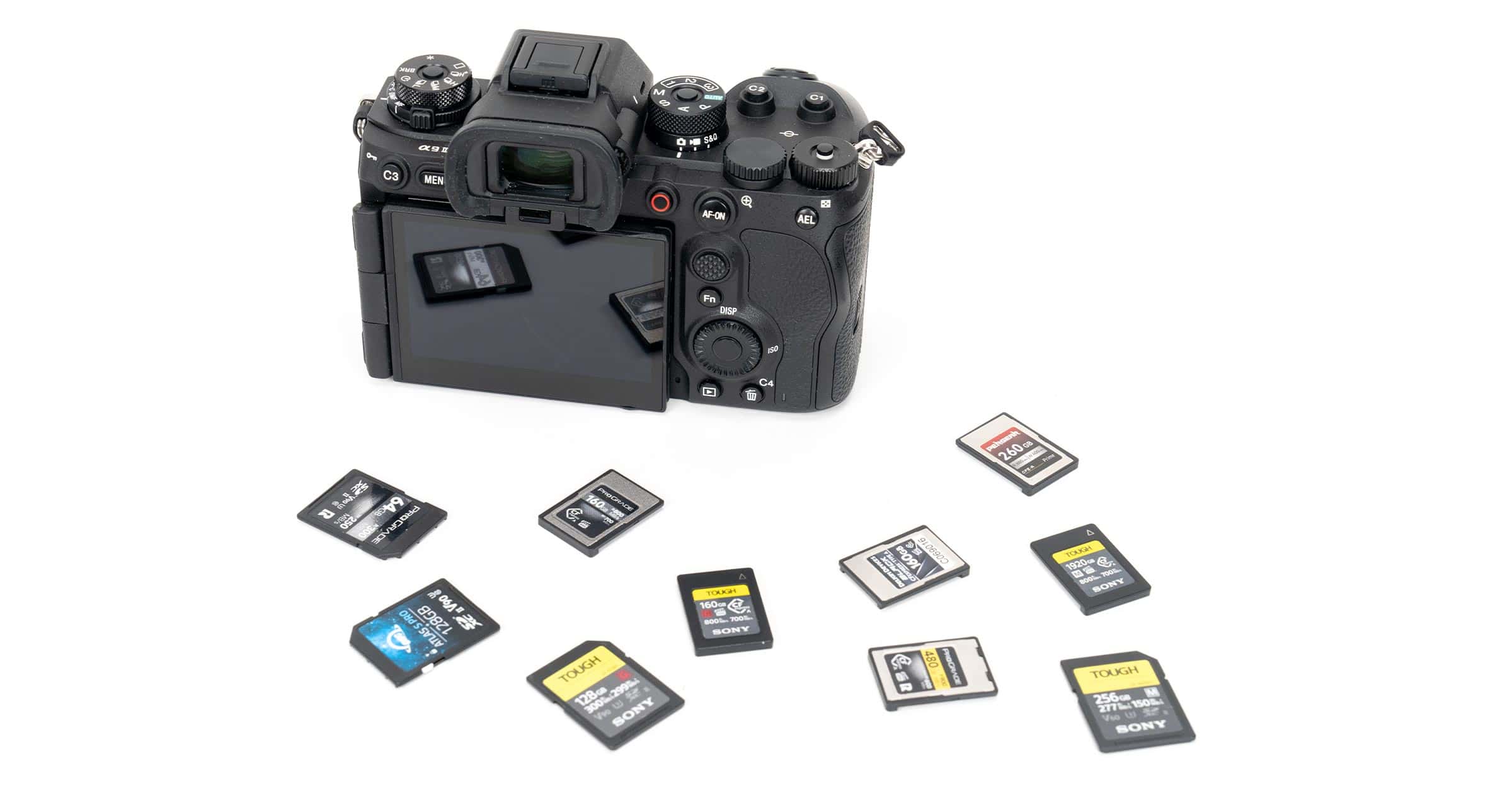


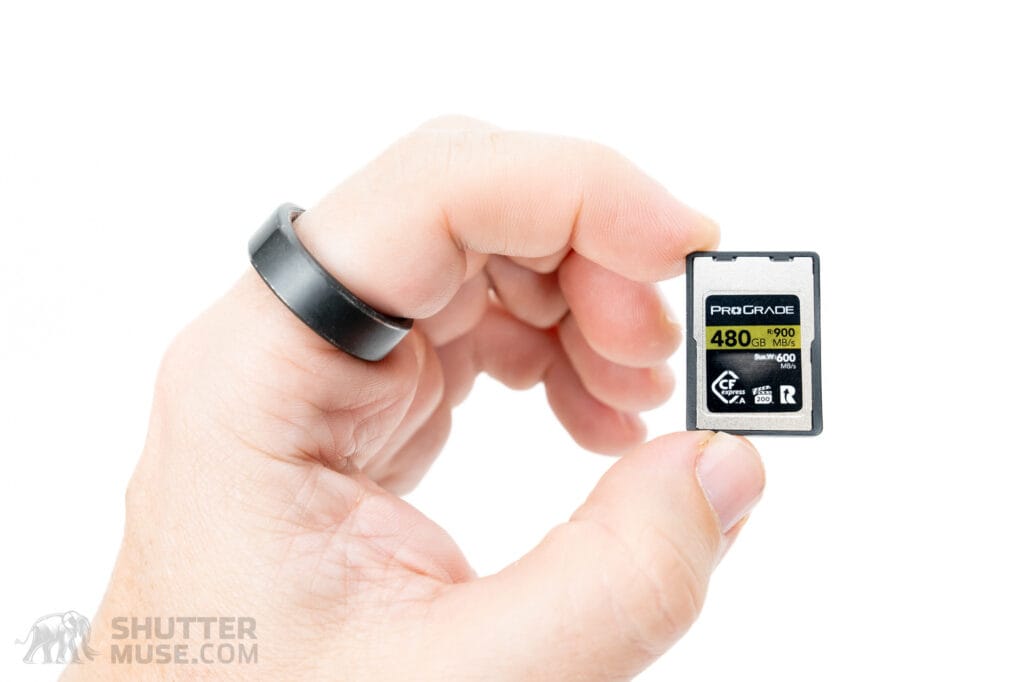
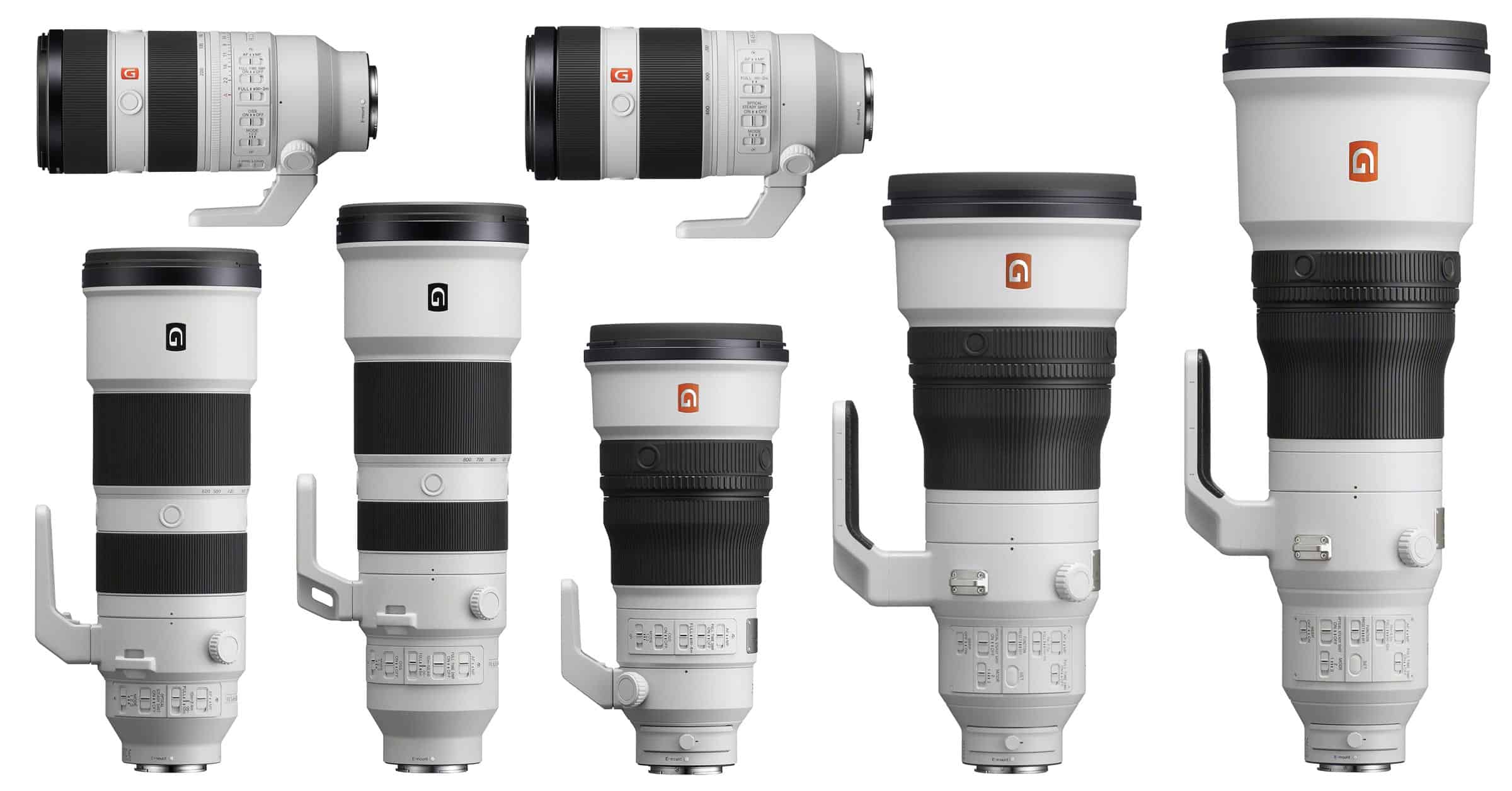




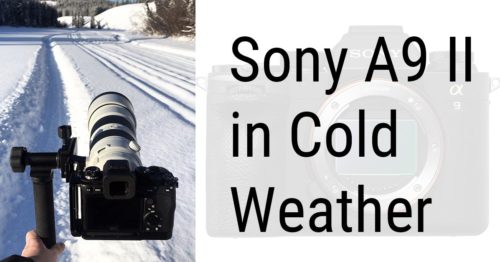
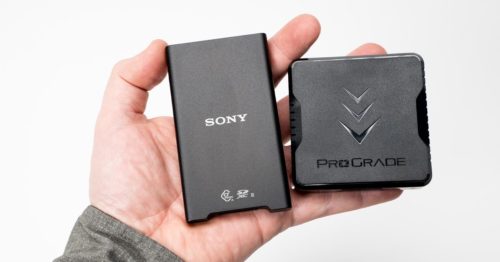
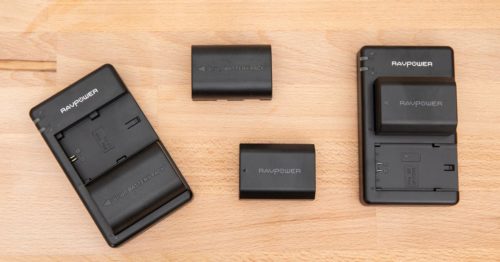
Hi Dan Carr,
i use the Lexar 320 GB Gold in Slot 2 for RAW Images and the Sony 1920 GB in Slot 1 for JPEG and Movie… this is the ultimate combination in my sense.. I never had problems with this Setup. So you didn’t waste money for the 1920 GB Cards…
Greetings
Udo
Are you shooting RAW+JPEG? I never do that because it limits the number of RAW files that can be shot before the buffer is full.